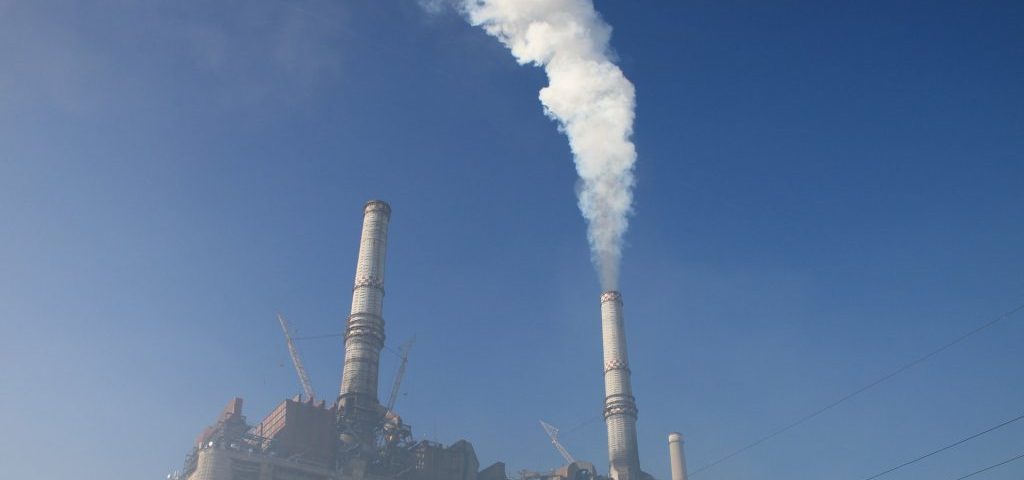The Public Utilities Commission of Ohio is still deciding whether to approve bailouts for FirstEnergy’s and Dayton Power & Light’s (DP&L) old, inefficient coal plants. The Ohio-based utilities want their customers to shoulder the costs of keeping these unprofitable coal plants running.
Coal plants aren’t cheap to operate. And as natural gas, wind energy, and solar energy have become increasingly affordable in recent years, coal can’t compete anymore. Moreover, subsidizing coal plants is not just a matter of higher electricity bills. We need to take into account the hidden costs of coal, which we all have to pay.
Health costs
Coal pollution harms human health and the environment. The American Lung Association reports that people’s breathing difficulties, including asthma, chronic obstructive pulmonary disease, bronchitis, and lung diseases, are worse when forced to breathe dirty air from coal plants. Coal plant emissions also cause heart attacks, strokes, cancer and birth defects. Lowering pollution from coal plants, on the other hand, can save lives.
Who Pays for the Hidden Costs of Coal?
Click To Tweet
Climate costs
 Coal pollution also contributes to climate change, which economists report will result in global costs of $1.2 trillion annually. This includes the costs for health care, premature deaths, harm to our food and water supply, and damage to our economy. We all pay for these costs in the form of higher taxes, higher health insurance premiums, higher food and water costs, repair costs for catastrophic weather events, and higher costs for goods and services.
Coal pollution also contributes to climate change, which economists report will result in global costs of $1.2 trillion annually. This includes the costs for health care, premature deaths, harm to our food and water supply, and damage to our economy. We all pay for these costs in the form of higher taxes, higher health insurance premiums, higher food and water costs, repair costs for catastrophic weather events, and higher costs for goods and services.
Clean-up costs
Another area of hidden costs is the clean-up costs. The residue from burning coal is known as coal ash. Utilities bury millions of tons of coal ash in the ground at their power plants, which are often located on rivers to receive coal supplies on barges. The coal ash is stored in underground dams that can break and infiltrate the water supply.
Clean energy resources like wind, solar, and energy efficiency do not spew pollution into the air, meaning they do not lead to the high health or economic costs imposed by dirty coal power.
In 2014, a Duke Energy coal dam collapsed, spewing thousands of tons of coal ash into the Dan River. Duke Energy spent $15 million in direct cleanup costs and paid $102 million in fines and additional cleanup costs. Fortunately, Duke Energy is the largest utility in the country and is well capitalized, so Duke Energy’s shareholders – rather than its customers – had to pay these costs. But that’s not always the case with coal ash spills – some utilities leave customers with the bill.
Coal mining also produces toxic waste, including heavy metal residue from mining and deadly chemicals used for processing the coal. Another disaster occurred in 2014, when a pipe broke at a coal treatment plant, leaking 10,000 gallons of a deadly chemical into the Elk River in West Virginia. For days, the water supply was toxic for the 300,000 residents of Charleston, and the companies responsible paid a $151 million settlement for clean-up costs. Area residents and businesses also incurred $61 million in economic losses.
Bankruptcy costs
Coal plants keep losing money, causing financial stress for the industry. Large companies like Duke Energy are not always available to pay for clean-up costs. Many coal mining companies have filed for bankruptcy in recent years, including Arch Coal, Alpha Natural Resources, and Peabody. When these bankruptcies occur, taxpayers are left to pay for the clean-up costs.
For example, when Peabody filed for bankruptcy, the company filed claims for $2.7 billion worth of clean-up costs in the states where it operated mines. Peabody was allowed to emerge from bankruptcy by agreeing to pay $1 billion in clean-up costs. Taxpayers will pick up the tab for the remaining $1.7 billion.
Water costs
As part of the energy-water nexus, different power sources require different amounts of water, and coal plants use a lot of water. Meanwhile, climate change stresses the U.S. water system and enhances the likelihood and severity of drought.
Coal plants also discharge millions of gallons of extremely hot water into our lakes and rivers, killing fish and destroying their habitats.
The upside of clean energy
Clean energy resources like wind, solar, and energy efficiency do not spew pollution into the air, meaning they do not lead to the high health or economic costs imposed by dirty coal power. There is no toxic ash or residue left to clean up at a wind turbine. If a solar company files for bankruptcy, customers won’t be saddled with millions in clean-up costs. Finally, wind, solar, and energy efficiency require virtually no water to make power.
By subsidizing utilities to keep running their old coal plants, we all pay today in the form of higher energy bills. And we will all pay again tomorrow, when we pay for the hidden health, economic, clean-up, and water costs. With all these costs, and all the benefits of clean energy, why in the world should Ohio customers subsidize FirstEnergy and DP&L to keep operating their old coal plants?
Enviroshop is maintained by dedicated NetSys Interactive Inc. owners & employees who generously contribute their time to maintenance & editing, web design, custom programming, & website hosting for Enviroshop.
